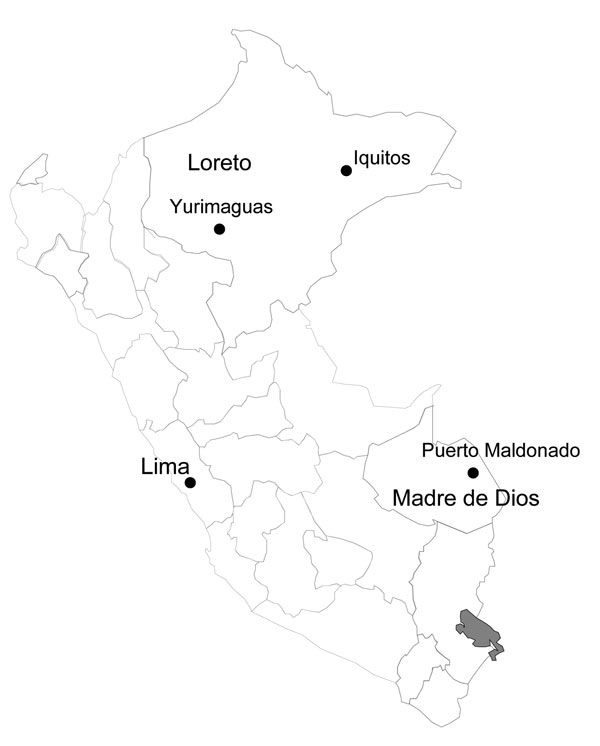Volume 16, Number 3—March 2010
Dispatch
Venezuelan Equine Encephalitis and 2 Human Deaths, Peru
Figure 1

Figure 1. Selected sites in Peru of passive surveillance study to determine arboviral causes of febrile illness in Peru, established in 2000 by Naval Medical Research Center Detachment and the Ministry of Health of Peru (protocol NMRCD.2000.0006). Sites shown include those of 2 patients with evidence of acute Venezuelan equine encephalitis virus infection. Shaded area is Titicaca Lake.
Page created: December 14, 2010
Page updated: December 14, 2010
Page reviewed: December 14, 2010
The conclusions, findings, and opinions expressed by authors contributing to this journal do not necessarily reflect the official position of the U.S. Department of Health and Human Services, the Public Health Service, the Centers for Disease Control and Prevention, or the authors' affiliated institutions. Use of trade names is for identification only and does not imply endorsement by any of the groups named above.